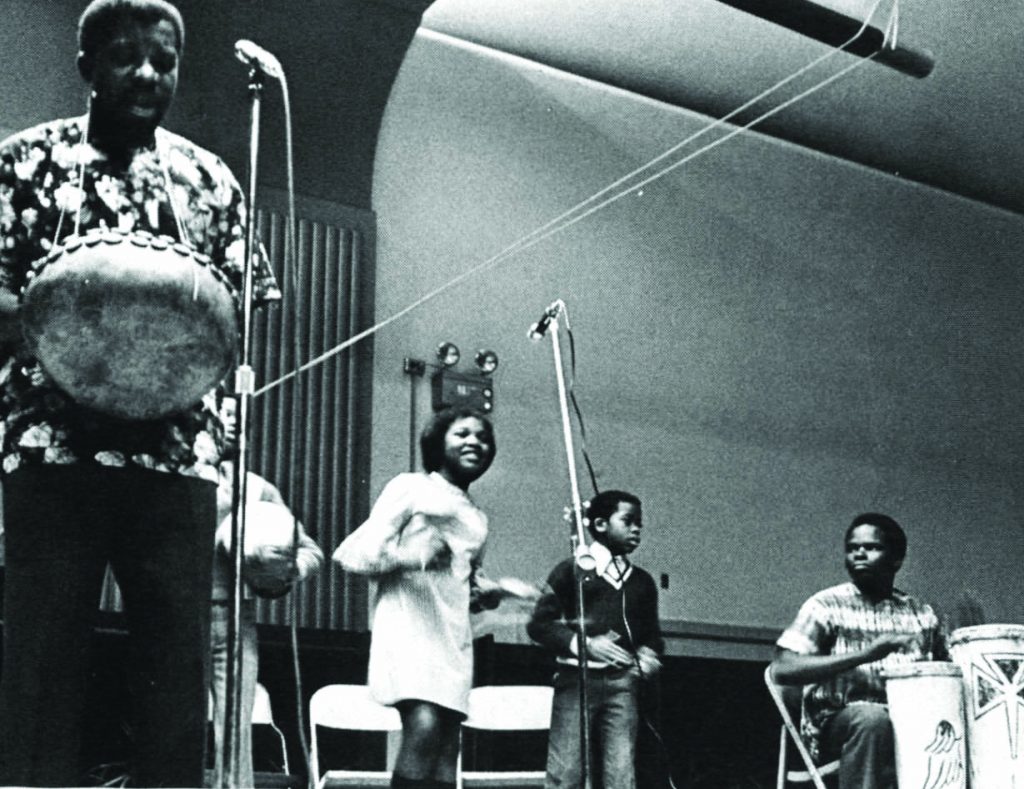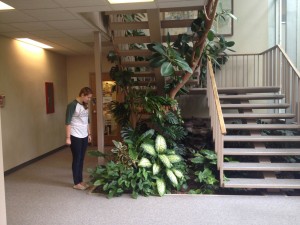Muneerah Maalik,Class of 2000
Digitized history of the Muslim Student Association
Muneerah Maalik,Class of 2000

In an earlier post we sketched out known histories of a variety of buildings on campus, including early residence locations for students. This time we have an intriguing new piece of knowledge about student life thanks to a new donation: a gold pocket watch.
The granddaughter of Reverend John Perry Edgar, Class of 1893, gave the university his watch and an inscription in that gift led me to an interesting finding. The inscription reads “Presented by Edgar Club, IWU, 1893.” The owner of the watch was the Club’s founder and its purpose was to provide students with room and board.
An article describing the Club says it was formed in 1889 with 22 men enrolled as members. In 1891 the group held a “unanimous vote that ladies be admitted.”
This seems shocking, at first glance. Men and women boarding together in the 19th century? The article continues with descriptions of the benefit of such an arrangement: providing suitable company at “the dinner table [where] character is developed, courteous behavior and polished manners reign.”
The official word from the University was that young women should board at Henrietta Hall, a residence run by the Women’s Education Association from 1874-1892, but the same publication also acknowledged the existence of the privately run clubs.
But what about the rooms? The details with regard to the descriptions provided by the clubs seem ambiguous but the 1895 IWU Catalogue of Courses is quite clear:
With the closure of Henrietta Hall,* rooming took place in private homes of “suitable” families but boarding with clubs continued for at least a few years after Edgar left and two (Bundy and Ross) credited him as the originator of the idea.
But back to the watch…it still keeps time well and both covers are etched but worn down with use. Still, the designs are visible: on one side are the initials JPE and on the other is a building. In this enlarged and enhanced image, it looks like Old North, which was built in 1856 and so was the first building on our campus. Edgar would also have had classes in Old Main, erected in 1870. Next time you’re on the 4th floor, stop by the archives to check out this “new” addition!
*After Henrietta closed it wasn’t until 1956 that a dorm for women opened again. That was known as “Southwest Hall” and was operated by the Women’s Guild of IWU until it became a co-ed dorm–IWU’s first–in 1976. That’s also when it was renamed for benefactor Anna Gulick, a name it carries today.
An exhibit currently on display in The Ames Library (in two cases, near the patio on the entry level) includes photos and written accounts by IWU faculty and students during World War I. These materials and much more are held in the University Archives.
Of particular interest in this exhibit are contributions from students in Professor Jim Matthews’ Fall 2016 FREN 301: Oral Communication class. In a recent conversation with Dr. Matthews, I mentioned that three French women joined students at IWU in the fall of 1918 and Matthews asked his students to learn more about the experiences of these women in the U.S. and respond in French; they contributed English translations for the benefit of visitors to the library’s exhibit.

Idellette and Annette Baron and Jeanne Seigneur, pictured in the 1920 Wesleyana, p. 156
Dr. Matthews and his students discovered several interesting things about the lives of these women in Central Illinois and beyond. Stop by the library before the end of the month or visit th archives anytime!
In an Argus article published on October 18, 1968, the newly formed Black Students’ Association announced its purpose and goals. Among them were plans to hold a Black Fine Arts Festival (BFAF): “This festival would attempt to show blacks and whites the
quality and diversification of black artists.”
The first event BSA organized was called “Black Resurrection (Pure Suffering)” and received extensive coverage in the alumni publication called The Bulletin. Several photos of the evening’s performances are in the archives and available online. The Argus also contains a photo of the event.

The first week-long event was announced in The Argus on December 3, 1971 and it took place Feb 6-12, 1971. The BFAF was held annually through 1981.
The photo shown here is of a performance by Ernest Kachingwe and his family. Kachingwe was the number one recording artist in Rhodesia, and the only African student at IWU at the time.
This recent addition to the archives offers an opportunity to introduce the campus to a trend in the archives world called re-photography.
 Re-photography involves re-enacting a scene from an earlier period in time by recreating it in a modern context. This is done in at least two ways: by deliberate restaging or reenactment without any variation such as is illustrated here, or by using an old photo for inspiration to create something with a modern twist.
Re-photography involves re-enacting a scene from an earlier period in time by recreating it in a modern context. This is done in at least two ways: by deliberate restaging or reenactment without any variation such as is illustrated here, or by using an old photo for inspiration to create something with a modern twist.
 We are illustrating the first case with the 1960 photo (above). It was donated to the archives recently and arrived with an article about planting the nascent rubber tree in Holmes Hall (see this Fall 2007 IWU Magazine story for more on the plant). Last summer Archives Student Assistant Melissa Mariotti (right) posed for a re-shoot in the same spot so it is possible to see how different the same location looks today. (Photo credit: Megan Dickey)
We are illustrating the first case with the 1960 photo (above). It was donated to the archives recently and arrived with an article about planting the nascent rubber tree in Holmes Hall (see this Fall 2007 IWU Magazine story for more on the plant). Last summer Archives Student Assistant Melissa Mariotti (right) posed for a re-shoot in the same spot so it is possible to see how different the same location looks today. (Photo credit: Megan Dickey)
The second way we’ve seen this done is by offering a new interpretation of an old scene that isn’t dependent on the specific location. Anyone can try this out by looking up old photos such as the ones added below. Over 1400 historical IWU photos, scanned from among the many thousands held in the University Archives, are available at http://tinyurl.com/iwu-historical.
Make your mark on IWU history…re-make an old scene in your own way today!
Memorial Day seems like a good time to highlight military-related documents held at IWU. Students, alumni, faculty and administrators have served in all U.S. wars since IWU’s founding. Diaries, correspondence, service records and recollections are held in both our archives and special collections.
Examples of these documents include service applications of the WWII-era Nurse’s Cadet Corps, alumni responses to a post-WWII survey of activities, correspondence from WWII soldiers to IWU student Nell Carmichael, correspondence and sketches from alumnus and Professor of Art Fred Brain to his family during WWII, index of WWI veterans plus photocopied clippings of articles related to their service, Nursing Superintendent Maude Essig’s WWI diary, and administrative meeting notes and student reporting on war-related activities on campus and abroad.
We lack significant documentation on the WWII-era S.A.T.C. and welcome donations related to this group’s purpose and activities on campus. Some dilligent researcher’s eyes may uncover details on this and other student groups’ efforts in existing documentation, and all our records are open and available for that work. Leave a reply (below) to contact me about arranging a visit!